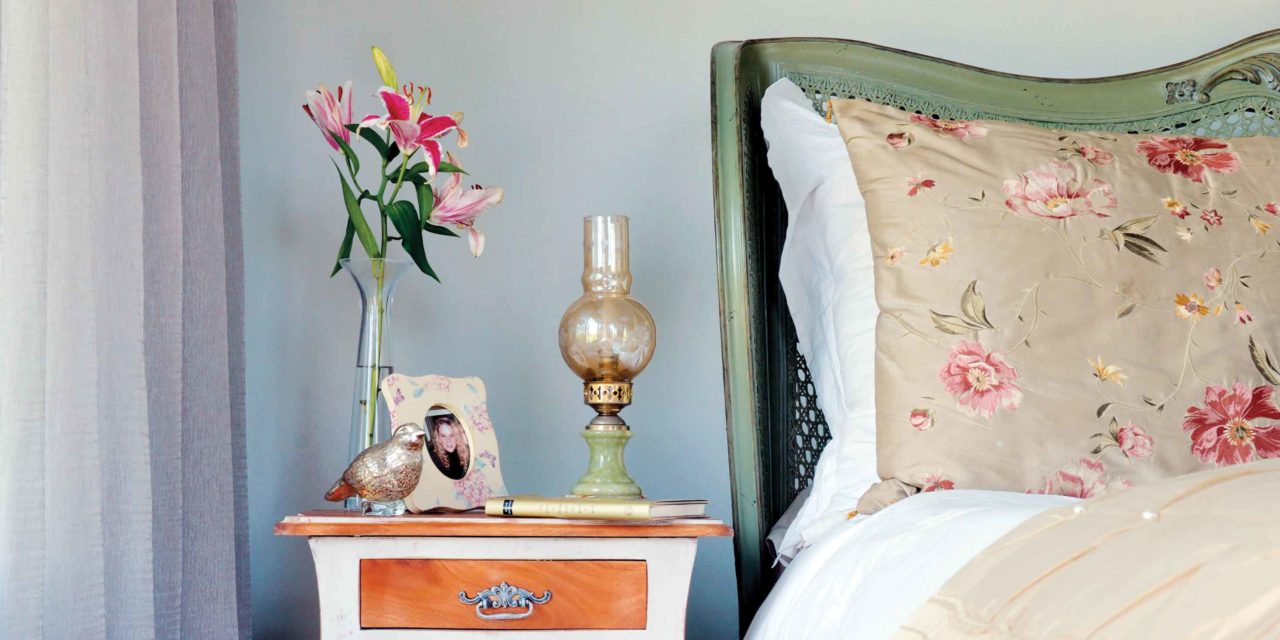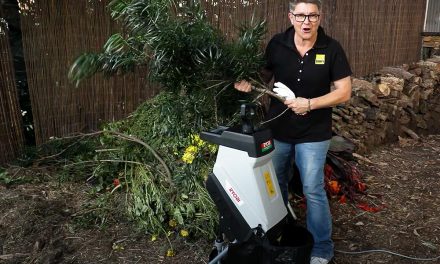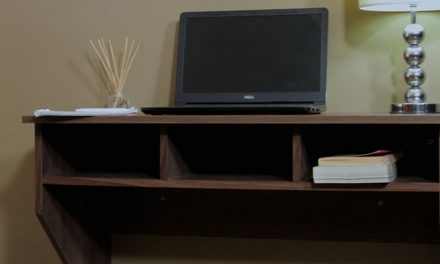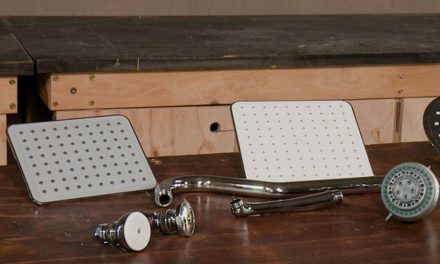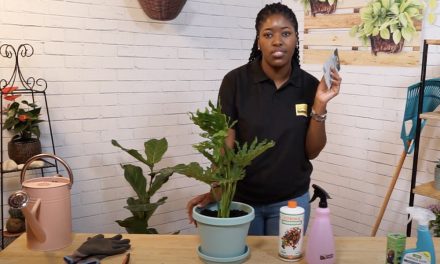Instead of splashing out on an antique, why not upcycle your own beautiful bedside table using a distressed paint effect? Paint specialist Shandor Daolio shows us how.
- 100-grit sandpaper
- multi-purpose primer
- turpentine
- oil-based enamel paint
- Winton Oil Colour paint in the colours Payne’s Grey or Raw Umber
- scumble glaze
- Woodoc Antique Wax or Sprayon Clear Matt Lacquer
- soft clean cloth
- 2 medium-width paintbrushes
- fine soft nylon paintbrush
- blade (or cutting knife or paint scraper)
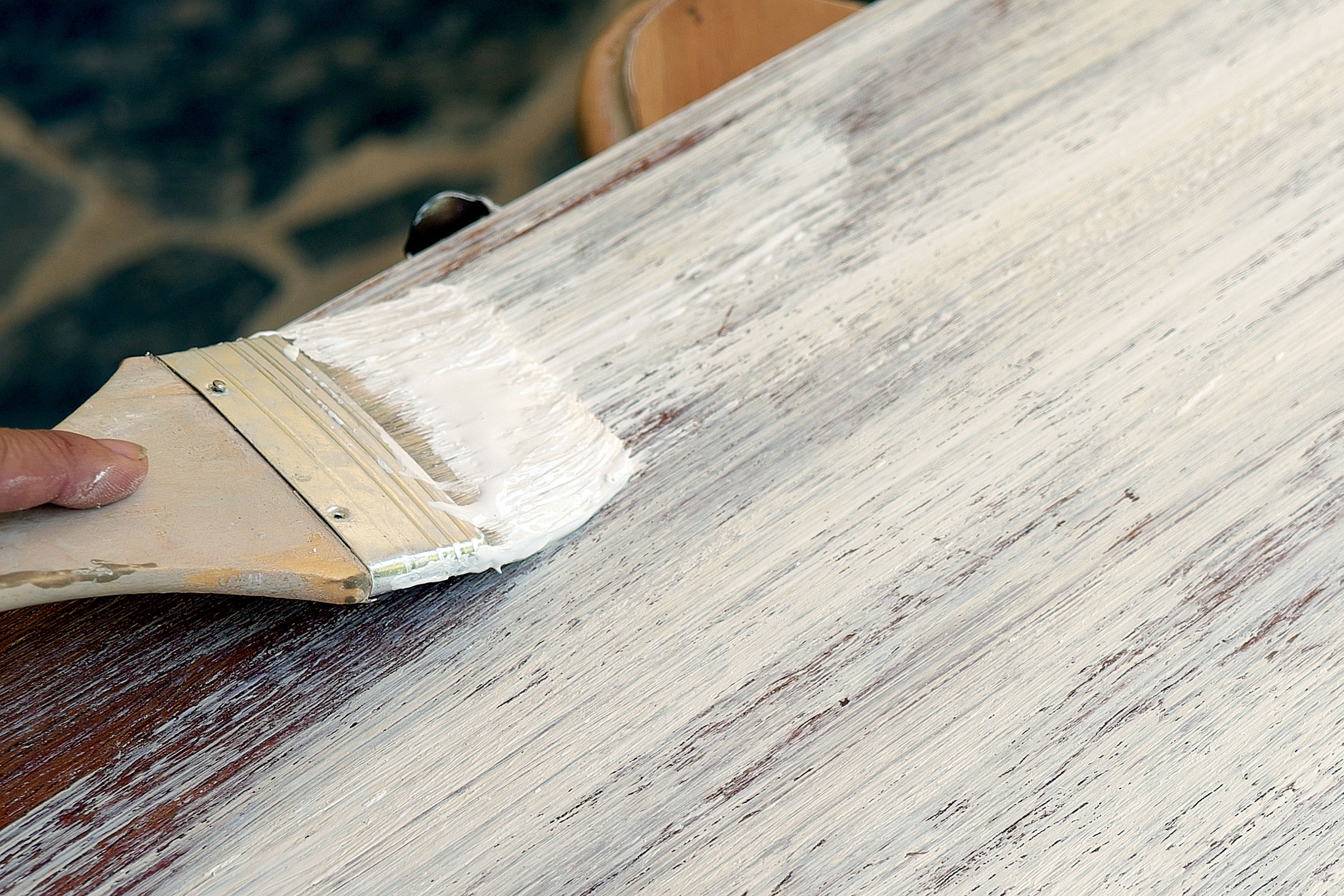
Preparation
Sand the pedestal along the grain of the wood with the 100-grit sandpaper. Wipe down with a damp cloth to remove all dust. Apply the multi-purpose primer with the mediumwidth paintbrush along the grain, allowing some areas of the wood to show through. Allow to dry completely.
Step 1
Mix your chosen oil-based enamel paint with a little turpentine and, using a clean medium-width paintbrush, drag down over the primer, leaving areas of primer and wood showing through. Leave to dry or ‘cure’ completely; this should take about two days, depending on the weather.
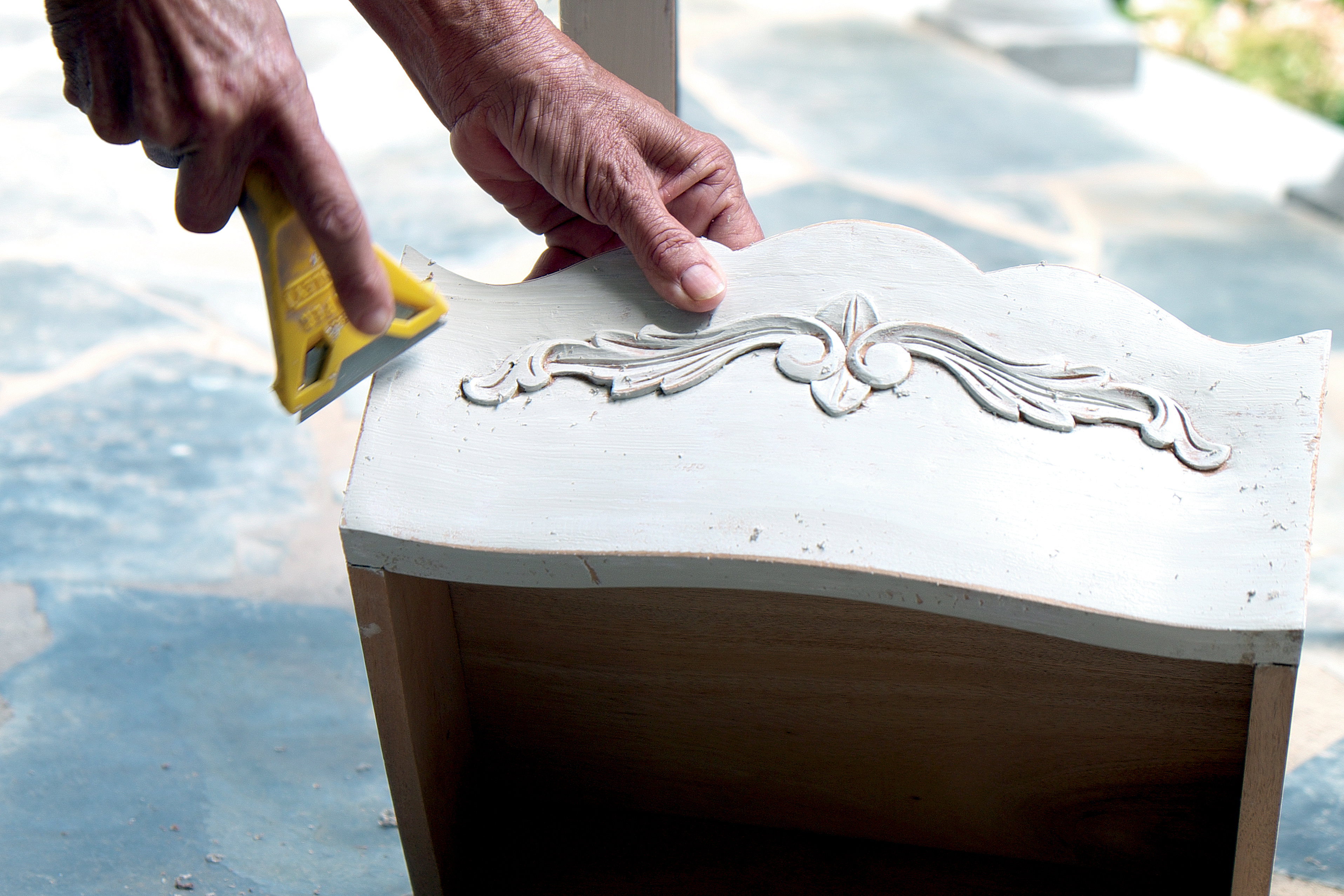
Step 2
In areas that would naturally become worn, such as raised edges and corners, scrape off any paint or primer with a blade.
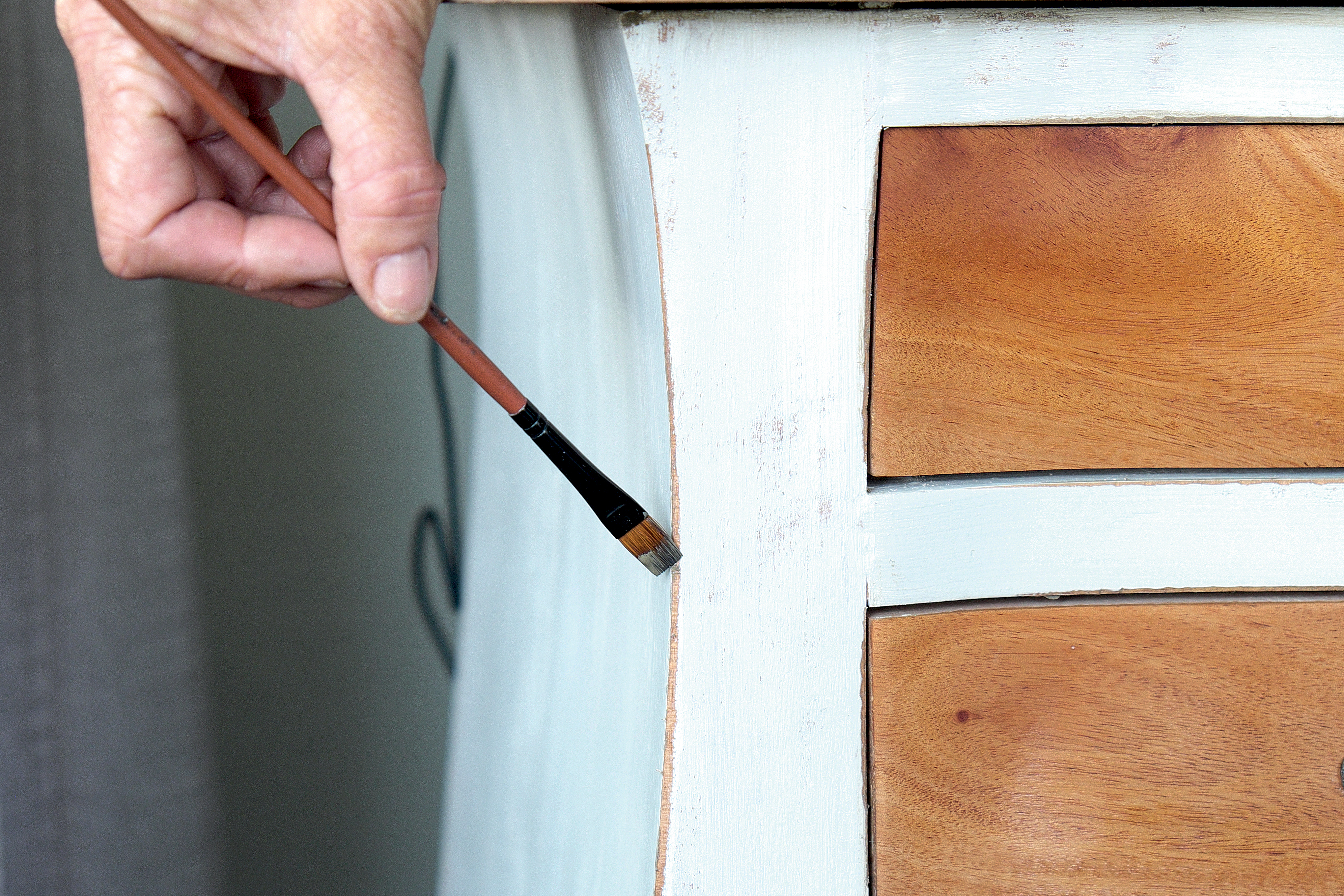
Step 3
Mix the Payne’s Grey and/or Raw Umber with the scumble glaze: 1 part paint, 2 parts scumble glaze, 1 part turpentine. The consistency should be paste-like – not too thin or too liquid. Using a fine paintbrush, apply this to the scraped edges as well as any other areas where you wish to emphasise detail. When thoroughly dry, apply a wax or at least 2-3 coats of a lacquerbased matt spray. Re-apply once a year to maintain the surface.
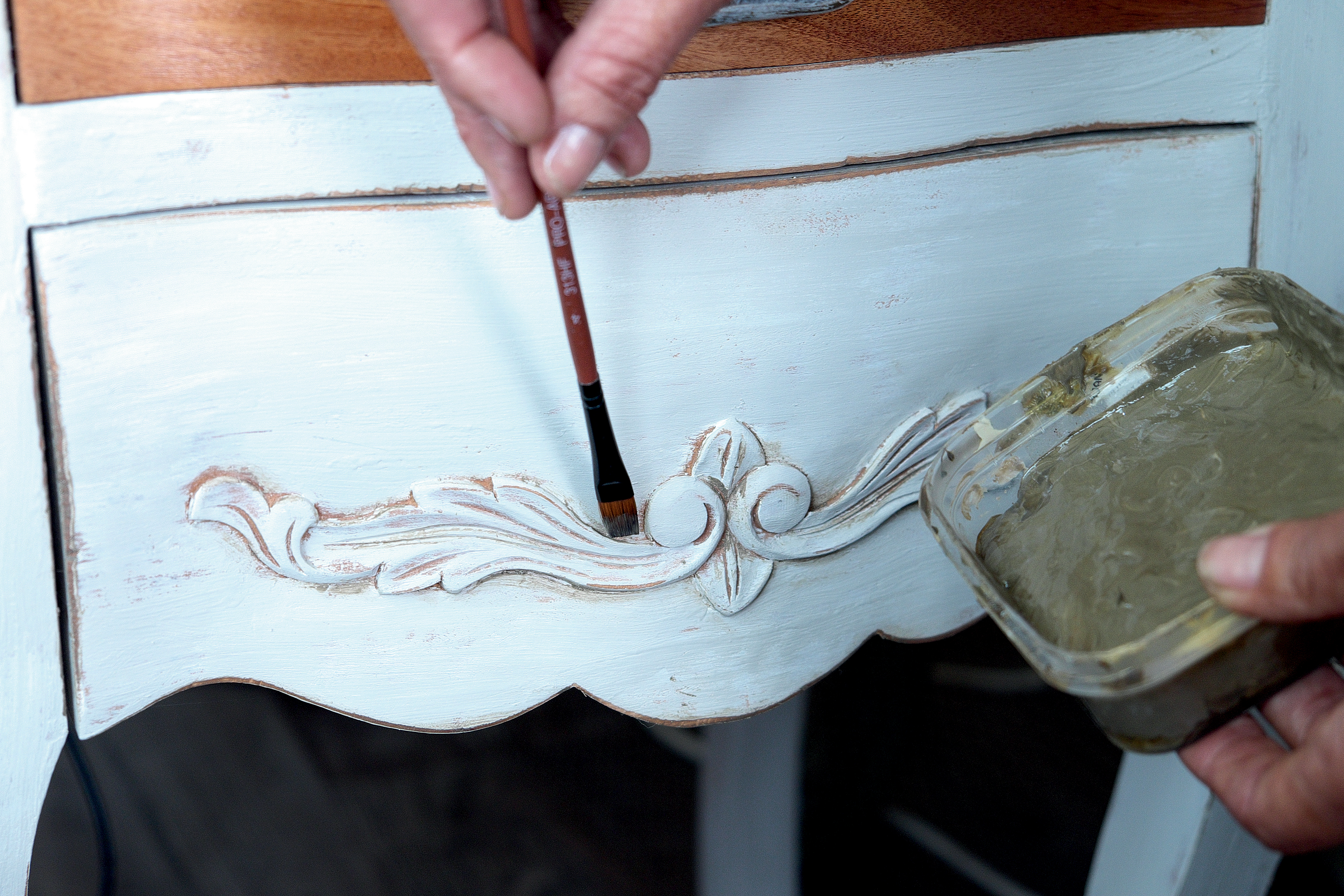
Step 4
Leave the natural wood of the drawers and top surface unpainted and treat with a clear matt varnish to add contrast and character to the piece.
Credits
Referenced from Gallo images / Home Magazine

